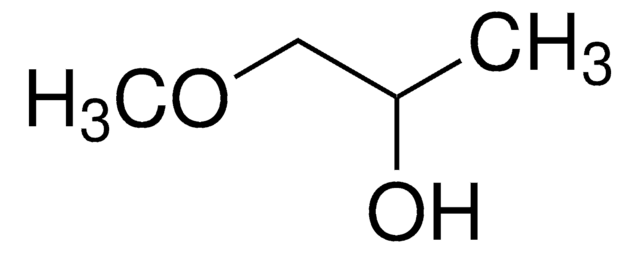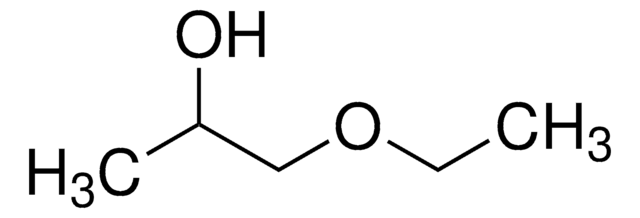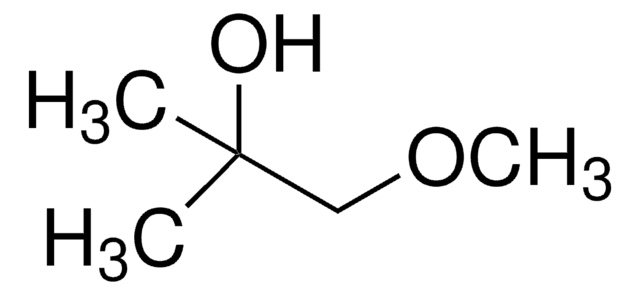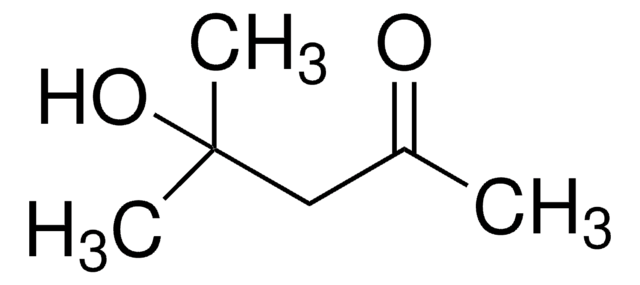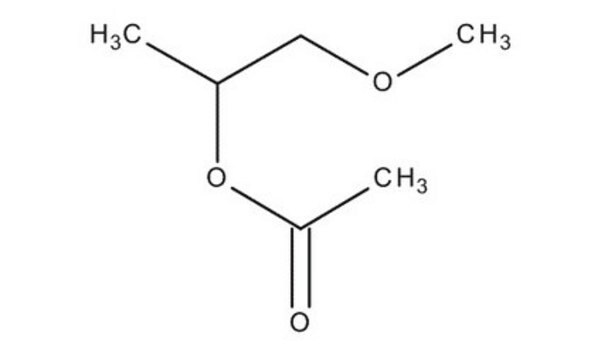65692
1-Methoxy-2-propanol
analytical standard
Sinónimos:
Propylene glycol methyl ether, Propyleneglycol monomethyl ether
About This Item
Productos recomendados
grade
analytical standard
Quality Level
vapor density
3.12 (vs air)
vapor pressure
10.9 mmHg ( 25 °C)
assay
≥99.7% (GC)
autoignition temp.
532 °F
shelf life
limited shelf life, expiry date on the label
expl. lim.
13.8 %
technique(s)
HPLC: suitable
gas chromatography (GC): suitable
refractive index
n20/D 1.403 (lit.)
n20/D 1.403
bp
118-119 °C (lit.)
density
0.916 g/mL at 25 °C (lit.)
application(s)
environmental
format
neat
SMILES string
CC(O)COC
InChI
1S/C4H10O2/c1-4(5)3-6-2/h4-5H,3H2,1-2H3
InChI key
ARXJGSRGQADJSQ-UHFFFAOYSA-N
¿Está buscando productos similares? Visita Guía de comparación de productos
General description
Application
signalword
Warning
hcodes
Hazard Classifications
Flam. Liq. 3 - STOT SE 3
target_organs
Central nervous system
Storage Class
3 - Flammable liquids
wgk_germany
WGK 1
flash_point_f
93.2 °F - closed cup
flash_point_c
34 °C - closed cup
ppe
Eyeshields, Faceshields, Gloves, type ABEK (EN14387) respirator filter
Elija entre una de las versiones más recientes:
Certificados de análisis (COA)
¿No ve la versión correcta?
Si necesita una versión concreta, puede buscar un certificado específico por el número de lote.
¿Ya tiene este producto?
Encuentre la documentación para los productos que ha comprado recientemente en la Biblioteca de documentos.
Los clientes también vieron
Artículos
The Utility of Headspace Grade Solvents for the Analysis of Organic Volatile Impurities
Nuestro equipo de científicos tiene experiencia en todas las áreas de investigación: Ciencias de la vida, Ciencia de los materiales, Síntesis química, Cromatografía, Analítica y muchas otras.
Póngase en contacto con el Servicio técnico